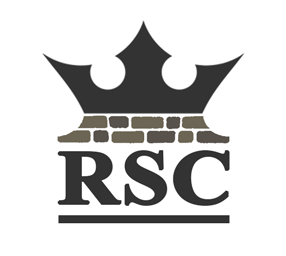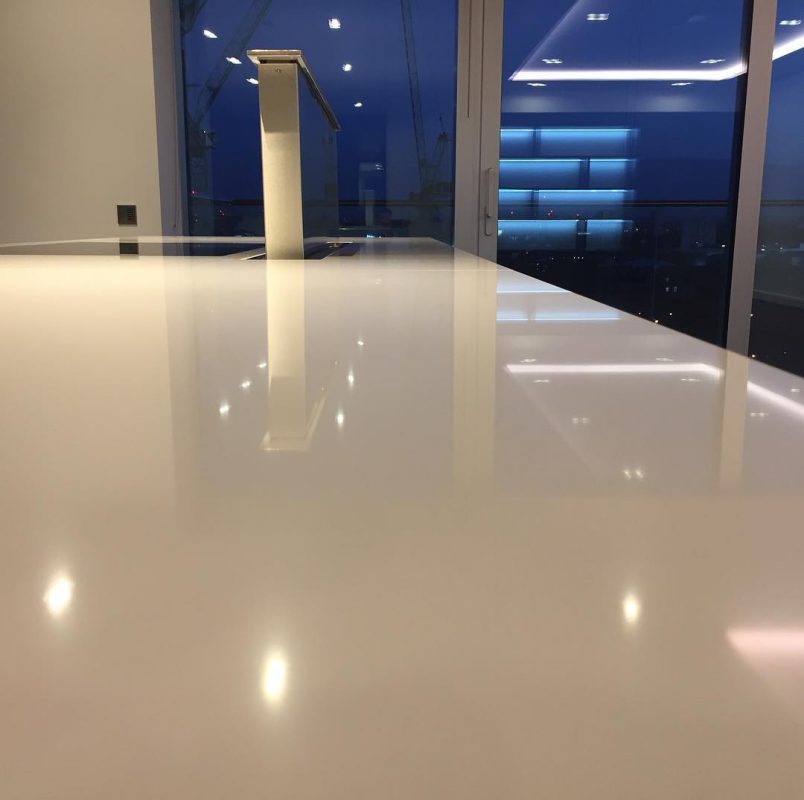Marble and granite have been used for worktops for hundreds of years. While both are a type of stone they are very different in structure. Marble is a soft stone which is more often used for decorative purposes and as a show of wealth. It is used for the carving of statues, ornaments and jewellery as well as flooring, wall coverings and worktops. Granite is at the other end of the hardness scale, being one of the hardest stones known to man. While granite too is sometimes used in carving, it’s more common use is for roadways and pavements, where it is cut into ‘sets’ and laid on a foundational bed.
Granite is a dangerous material to work with. I once saw a mason chiselling a block of marble and a small chipping from it went straight through a small pane of glass about three feet away. It was just like a bullet hitting the glass. Eye protection is a must for that job. Even then…
Where the two types of stone are similar is in the way they are cared for and cleaned. Both are susceptible to staining and etching, small scratches. More noticeable when the material is highly polished like worktops often are, although matt finish versions are sometimes installed.
Prevention tactics
Preventing or reducing wear and tear on your stone surfaces is certainly better than paying to repair the damage later. Here are four tips to help you.
- Always use felt based mats or coasters when placing any hard items on your tops. Things like crockery and glassware, saucepans, and cutlery. This is for preventing scratches.
- Hot things like saucepans and ovenware need to be placed on trivets or hot pads.
- Avoid alcohol spillages and placing citrus fruits on the tops. They can stain and dull the surface.
- Don’t place glasses, bottles or drinks cans on the surfaces as they often leave a ring of stain. Use mats or coasters. The ring left from a lemonade bottle can dissolve marble.
Cleaning the surfaces
First, clear all loose items off the tops. Using a damp microfibre cloth, wipe off any debris. Rinse your microfibre cloth in warm soapy water and wipe the surfaces over again, making sure there is no residue of any kind on the stones surfaces, then dry with a chamois leather. Do not allow the surfaces to air dry as streaks could be left.
Usually, that is all it takes for regular maintenance. However, if there are any stains or dirt left then you may need to use a proprietary marble or granite cleaner. DO NOT use the usual kitchen cleaners. They may contain limescale remover and both types of stone are easily damaged by any anti-lime product. Hydrogen peroxide is a good cleaner as that is basically double strength water. The reaction it has when used helps to lift dirt and stains without damaging either marble or granite. If you use anything else, make sure it says suitable for marble or suitable for granite on the label.
If you want, you can periodically reapply either a marble or granite polish after cleaning to help maintain its shine and seal against accidental spills. Do not do this too often though. About once every two months for granite should be plenty and only once or twice a year for marble. Granite may need re-sealing every two years or so.
Removing stains from marble and granite surfaces
Granite is not so easy to stain if it’s polished well. Marble, apart from being a soft stone is also very porous. This means it can stain easily. The bottoms of glassware, bottles and drinks cans seem to be the favourite items for causing stains, so please take our above advice on prevention.
I’ll again remind you here to NOT use any product that contains limescale remover or lemon.
If you do get a spillage that could stain, immediately dab it dry with a paper towel or tissue rather than wipe it up with a cloth. Wiping it could spread the liquid and make the stain worse and over a wider area. If there is a stain, after drying it with paper, the best way to remove the stain is make up an absorbent poultice as follows: –
For an oil based stain, like from salad or cooking oils, mix up a ratio of 1 cup of sodium bicarbonate to approx. 5 tablespoons (74ml) of washing up liquid. You can use baking powder if you wish but you’ll find it more expensive and it has a rising agent in it. Mix to the consistency of soft putty or stiff yogurt. Apply it to the stained area only, to a depth of about a quarter of an inch (a touch over 6mm), cover it with clear plastic film and tape it down. Leave it to dry for at least 24 hours but no longer than 48 hours. To clear the dried poultice off use a sponge or cloth, then rinse the area as per normal cleaning described above. If the stain hasn’t been completely absorbed by the poultice, repeat the process as many times as necessary for removal.
For water based stains it’s the same procedure as with oil based stains but with the addition of some hydrogen peroxide. Make the mixture about peanut butter consistency, then apply and clean off as above.
Some final tips
- Granite is a hard stone, but it can be scratched. Scratch removal is best left to our professionals who have the specialist equipment to deal with it.
- While clear waxing will help to protect both granite and marble, please avoid waxing white marble as it could result in a yellowing film appearing on the surface.
- All cleaning agents need to be ph neutral and anything containing lemon or limescale remover in it must be avoided at all costs. Deep cleaning or re-polishing is best left to our professionals.
- Daily maintenance of sweeping, wiping and dusting is often sufficient. For more serious stone cleaning or maintenance, call in our professionals.

